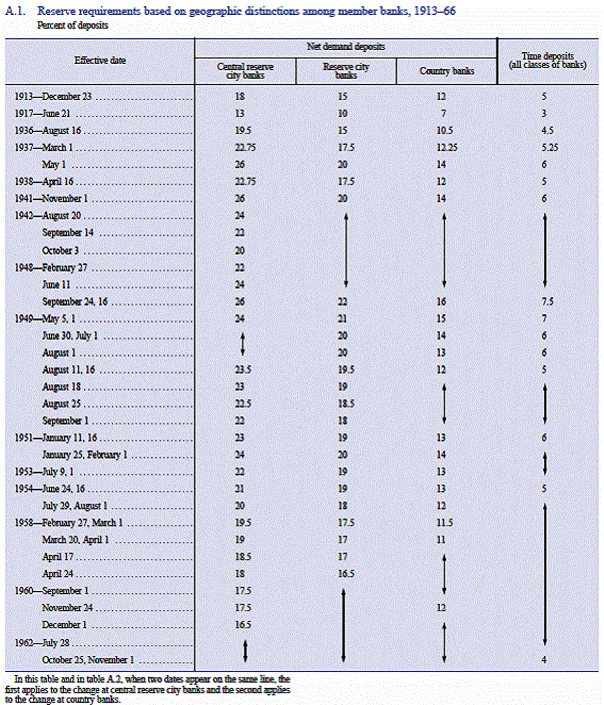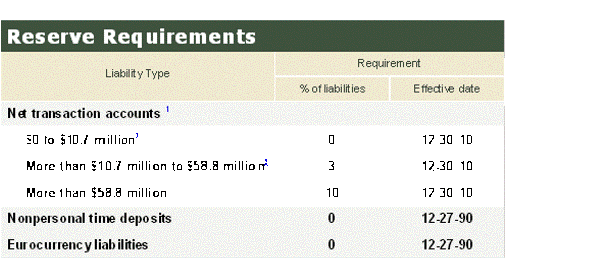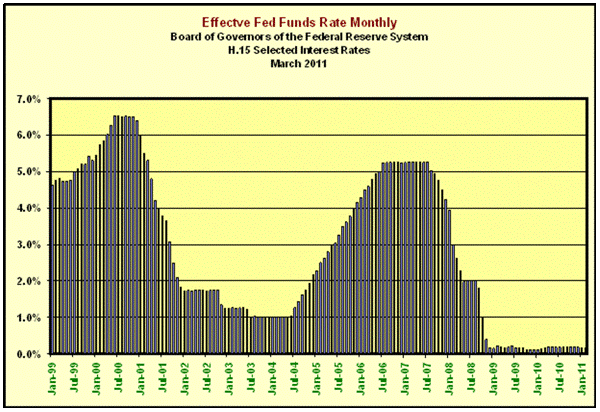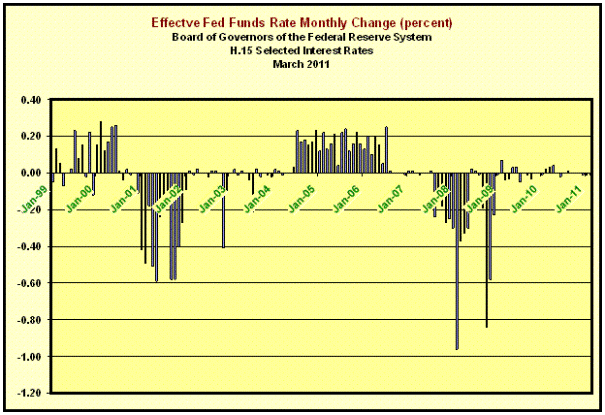March 18, 2011
For a downloadable version, click the following:
THE LOCKED IN EFFECT: Complicating the FED’s (as in Federal Reserve) conduct of monetary policy
Every so often, a confluence of the effects of past legislative actions occurs. Each of the past actions by themselves may seem to be a rational response to the problems of that time. Hindsight rarely looses to foresight, as the saying goes. A current case in point is the so-called, “locked-in-effect.” Its occurrence is not novel but the circumstances for its reappearance are interesting.
This locked in effect occurs when a financial institution owns assets it desires to sell, perhaps unload is a more realistic term, but has at least one overriding reason, if not more, NOT do so.
Back in the mid to late 1950s, the locked in effect was a basic staple of the economic and financial literature.
Locked–In-Effect
broken link http://www.bookrags.com/tandf/locked-in-effect-tf/
Brief note - Stiglitz
The Inverse Relationship: Security prices (debt and equity) and Interest Rates
At that time, the villain was the inverse relationship of security prices to interest rates. This is a relationship that is often cited on this website. Unfortunately, it is little understood by the public much to the detriment of their net worth. While this relationship holds for all assets, it is most precise for debt securities such as bonds. Debt securities spell out the contractually agreed to cash flow from original borrower to the holder of the security. Most investors are aware of the credit or default risk involved but few fully understand the interest rate risk they bear on such investments. The longer the time to maturity and the lower the coupon rate, the greater the percentage change in the market price for a one percent change in the market’s required rate of return on the security in question.
The consensual market’s required rate of return is the rate of discount applied to the expected cash flow of the security that determines the discounted present value of the cash flow. The discounted cash flow so calculated is what determines the market price of the security.
Therefore, as interest rates rise, the market prices of the securities (assets in general) fall and as interest rates fall, the market prices rise. The cash flows or their equivalent flow of non-cash benefits from equity securities and real assets is not usually contractually agreed to. This makes the determination of the market prices of equities and real assets more subjective.
As interest rates rose, the debt securities banks held, usually U.S. Government marketable securities, experienced a decline in their market prices. While this caused an unrealized loss, it would not be realized if the debt securities were not sold. Interest rates could fall and the market prices would rise or the debt securities would experience a declining time to maturity and their market prices would converge on their maturity values. Not wanting to book the loss if they sold the securities, they were “locked in” as the expression goes.
The FED (Federal Reserve Board of Governors) Position
Currently, the FED owns billions in such debt securities such as mortgage backed securities (MBSs) and the more general category of collateralized debt obligations (CDOs). These are private sector securities purchased in the open market or swapped for when the financial markets appeared to be tanking. They are riskier than U.S. Government securities in a credit risk or default risk sense, but they also bear interest rate risk.
One of the problems is that they increased the monetary base and the legal reserve base of the depository institutions when they were purchased (not so when they were swapped for) and along with other net asset acquisitions, led to fears of inflation. As we have pointed out on this website, the FED can offset such increases in the legal reserve base and thus capacity of depositories to create additional money and credit, by such things as raising the legal reserve ratios, just as they have in the past.
We will discuss this a bit later, but first we'll go over interest rate risk.
(The Financial Fiasco of Two-Thousand Eight (FFTTE))
(Volume 2009: Issue 1) January 2, 2009
INTEREST RATE RISK
Owning equity or long-term debt securities for investment purposes and for trading purposes is inherently risky in terms of interest rate risk (inverse relationship of security prices to interest rates) even if those securities credit or default risk, or its equivalent beta for stock, is very low. The longer the term to maturity and the lower the coupon rate or its equivalent, the greater the percentage decline in the market price of the security for a one-percent rise in interest rates.
Two components of Interest Rate Risk
The two components of interest rate risk are the price risk and the reinvestment risk.
- The price risk is greater the longer the time to maturity and the lower the coupon rate.
- The reinvestment risk is greater the higher the coupon rate.
This is what helps drive the inverse relationship. The combination of the coupon rate and the time to maturity determine the duration of the financial asset. Of course, the determination of these values is more precise for debt securities such as bonds where there is a contractual relationship and much less precise for equities such as common stock, where there is no contractual guarantee of the cash flow.
Interest rate risk should not be confused with credit or default risk. The only link between the two is a result of the risk premium reflecting the probability of default. The higher that probability, the higher is the coupon rate and hence, the smaller the interest rate risk. Other than that, the two types of risks, interest rate risk and credit or default are not related.
Long-term U.S. Government bonds have little credit or default but have a significant degree of interest rate risk.
You can eliminate the reinvestment risk part of interest rate risk by investing in zero coupon or pure discount debt securities such as bonds since there is nothing to reinvest, but as the coupon interest rates decreases, the price risk increases.
Various Required Reserve Ratios over the years
Reserve Requirements: History, Current Practice, and Potential Reform
www.federalreserve.gov/monetarypolicy/0693lead.pdf

At the present time, with a 10% legal reserve ratio, an increase in legal reserves of one dollar can result in a maximum increase of ten dollars of the checkable deposits portion of M1 money. Since one of those ten dollars resulted from the Fed’s acquisition of securities, nine additional dollars of credit can be created if the depository institutions choose to create checkable deposit money and actually lend it. This is what is meant by the fractional reserve system.
US Code of Federal Regulations
TITLE 12--Banks and Banking
CHAPTER II--FEDERAL RESERVE SYSTEM
SUBCHAPTER A--BOARD OF GOVERNORS OF THE FEDERAL RESERVE SYSTEM
PART 204—RESERVE REQUIREMENTS OF DEPOSITORY INSTITUTIONS (REGULATION D)
Federal Reserve Monetary Policy – Reserve Requirements
Current Reserve Requirements
federalreserve.gov/monetarypolicy/reservereq.htm

Is the FED effectively locked-in?
The real problem causing the locked in effect is the fact that these assets acquisitions were undertaken to support the markets in the deepest trouble. To unload them by selling them, the same markets for CDOs, including MBSs, could conceivably crash again as the market supply is augmented by FED sakes causing their prices to fall. It seems that the FED is more likely to hold them until they gradually mature.
It should be pointed out that the move toward a more extensive application of the lower of cost or market rule and more generally a marking to the market rule, may be ill-conceived since fluctuations in interest rates cause the fluctuations in the market prices of these securities in question. This plus panic selling and programmed asset management can exaggerate the seriousness of the problem. This whole area of supervision and regulation must be thoroughly re-thought. The movement of interest rates over the past 20 years or so indicates the cause of the volatility of asset prices, especially debt securities, reflecting the inverse relationship of security prices to interest rates.
Fed Funds Rate (monthly average 1999-2011) ---

Volatility of Interest Rates (month-to-month change in Fed Funds Rate 1999-2011)

Stay-tuned…more to follow


